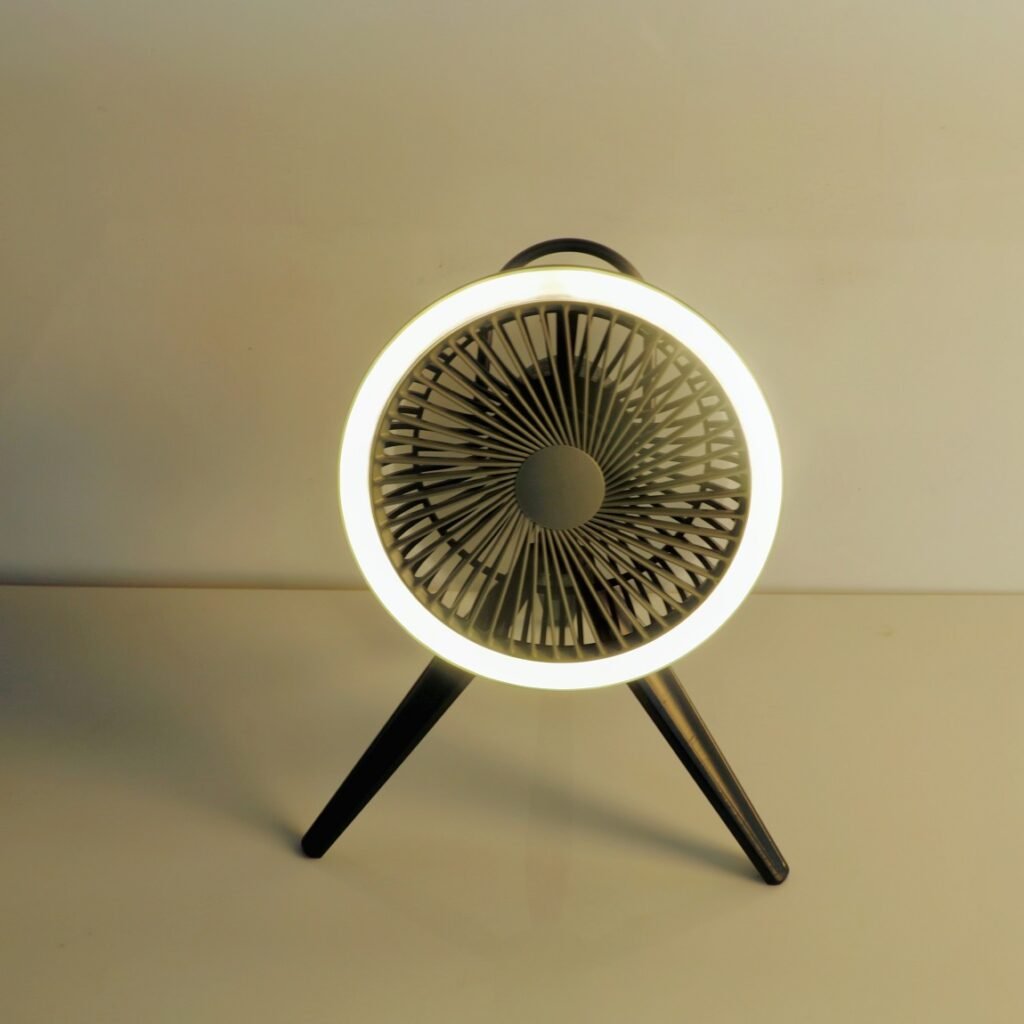A tent fan is handy for very warm temperatures and still weather when the climate inside the tent body can become uncomfortable for relaxing or sleeping.
The fan aids evaporation from the skin, cooling the body.
A camping fan can also provide air circulation inside a tent that doesn’t have enough screen area, has been closed up for privacy, or has been sealed against the rain.
A tent fan features multiple speeds to move more air or to conserve battery power. The fan may also offer an LED night light to illuminate the tent body after dark.
A camping fan is also useful in cool weather, where it can provide enough air circulation inside the tent body to reduce condensation.
Since tent fans run on small household batteries, they are easy to transport, making them ideal for enhancing family tent camping.

A tent fan does not have to be specifically labeled as a tent fan. Any battery-powered personal, desk, or travel fan will work. Tent fans mainly have special attachment points for tent ceiling loops or for tent fabric and run on D-cell batteries, so they have plenty of current to run for long periods of time.
If you’re renting a campsite with electricity, you can pack a house fan to ventilate the tent.
Tent fan sizes
Tent fans are designed to either circulate air throughout the tent, to provide spot cooling for a single camper, or both.
Camping fans are D-cell-powered units using from 1 to 8 alkaline batteries. More batteries offer more ventilation or longer runtime.
Small, personal, spot-cooling fans are available that attach to tent fabric via magnets and stream air over a single camper. This fan has soft, small blades with no cage around them. It usually runs on a single battery.
A medium-size camping fan can ventilate a tent body. This is often a 6-volt device, running on 4 D-cell alkaline batteries.
If renting a tent campsite with electricity, you can bring a house fan.
Can I get by without a tent fan?
Family tent campers should try to use the outdoor conditions, when possible, to keep the tent body comfortable.
On warm days, this includes orienting the tent doorway or windows into a light breeze and pitching the tent in the shade.
The tent should have plenty of ceiling, window, and door mesh. There should be a door or window in each wall, or two windows in large walls, for good cross ventilation.
Otherwise, a tent fan may be necessary to make up for the reduced ventilation of the tent design.
Pitch the tent in the shade of trees or landscape on warm days. In the northern hemisphere, pitch the tent so that trees are to the south and west.
Rig a tarp over the tent, if there is no other way to provide shade.
If the tent has a low vent, closing the tent doors and windows and opening the low vents can create a convective draft up through the ceiling mesh. The draft will help cool the tent body. Warm, moist air inside the tent body will rise out the mesh ceiling and be replaced by cooler, drier air from outside the tent.
If weather and nature cannot provide a comfortable climate inside the tent, then consider a tent fan.
For warm and humid camping conditions, it may not be possible to make a tent body comfortable without a tent fan to support ventilation.
As campers relax inside a tent, breathing, perspiration, and body temperature can make the climate inside the tent body become more warm and humid than the air outside the tent. A tent fan can circulate air inside the tent body, drawing in the fresh air and exhausting humid air.
At what outdoor temperature and conditions will I want a fan?
Many tent campers will probably desire a fan once the heat index approaches 80 deg F if there is no breeze to ventilate the tent.
Warm days tend to be still days, so campers are less likely to get a comfortable breeze on these days.
(If winds pick up on very warm days, they are more likely to be storm winds, instead of comfortable breezes.)
Will a tent fan be enough?
A tent fan should be adequate for most campers on very warm days.
Once the heat-index temperature approaches body temperature, a fan will no longer have a cooling effect. In fact, it can make the body less comfortable.
On a hot, humid day (heat index of 90+ deg F or 30+ deg C), a tent fan will no longer be effective. Family campers who would like to tent camp in this weather may need to consider an air conditioner.
However, tent fans are far more portable than air conditioners and run on batteries, instead of on 120-volt electricity. Campers will need to determine for themselves the trade-off between portability, power draw, and comfort.